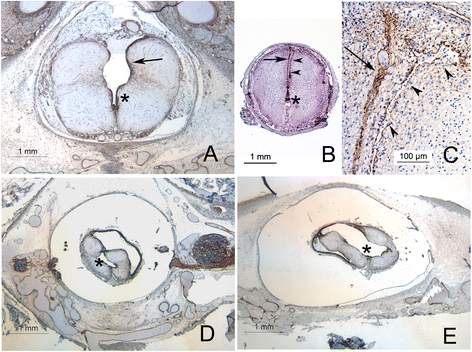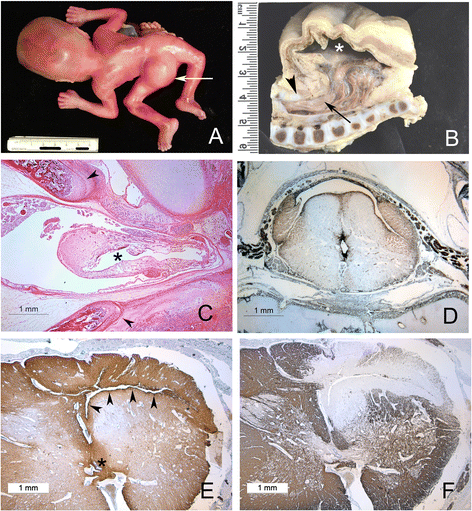Fetal syringomyelia
- PMID: 25092126
- PMCID: PMC4167126
- DOI: 10.1186/s40478-014-0091-0
Fetal syringomyelia
Abstract
We explored the prevalence of syringomyelia in a series of 113 cases of fetal dysraphism and hindbrain crowding, of gestational age ranging from 17.5 to 34 weeks with the vast majority less than 26 weeks gestational age. We found syringomyelia in 13 cases of Chiari II malformations, 5 cases of Omphalocele/Exostrophy/Imperforate anus/Spinal abnormality (OEIS), 2 cases of Meckel Gruber syndrome and in a single pair of pyopagus conjoined twins. Secondary injury was not uncommon, with vernicomyelia in Chiari malformations, infarct like histology, or old hemorrhage in 8 cases of syringomyelia. Vernicomyelia did not occur in the absence of syrinx formation. The syringes extended from the sites of dysraphism, in ascending or descending patterns. The syringes were usually in a major proportion anatomically distinct from a dilated or denuded central canal and tended to be dorsal and paramedian or median. We suggest that fetal syringomyelia in Chiari II malformation and other dysraphic states is often established prior to midgestation, has contributions from the primary malformation as well as from secondary in utero injury and is anatomically and pathophysiologically distinct from post natal syringomyelia secondary to hindbrain crowding.
Figures




References
-
- Klekamp J, Samii M. Syringomyelia: Diagnosis and Treatment. Heidelberg: Springer-Verlag Berlin; 2002.
MeSH terms
Supplementary concepts
LinkOut - more resources
Full Text Sources
Other Literature Sources
Medical

